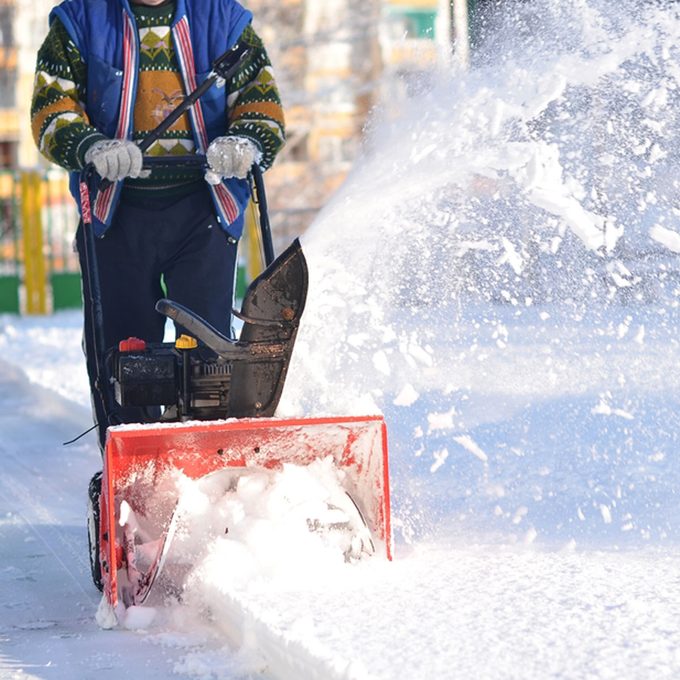Is Your Snow Blower Ready for the First Big Dump?
Updated: Dec. 21, 2022
The season's first big snowstorm could be just days or weeks away. Get your snow blower ready for the season's first blast of snow now.

It could happen in October or it may happen in January. Depending on where you live, the season’s first big snowstorm could arrive in just days or weeks. No matter where you live, however, you should get your snow blower ready for the season’s first blast now, before the first flake falls.
You need about an hour to get your gas-powered snow blower ready for winter. Here’s a simple checklist:
On This Page
1. Make Sure You Have Gasoline Ready
This past spring, you should have drained your snow blower’s gas tank. Fill an empty tank now. If you didn’t drain the tank, try staring the engine. If it runs, drain the old fuel, and then fill it with fresh gasoline. Keep in mind that small engines run best with ethanol-free fuel. If you can, spend the extra couple of dollars on the upgraded fuel.
If you’re buying a new snowblower, here are 15 things you need to know.
2. Check the Oil in Your Snow Blower
Dark and dirty oil needs changing. For most snow blowers, you can DIY an oil change. Follow these snowblower oil-change tips to avoid an oily mess.
Having trouble getting your snowblower started? Try these small engine start-up tips.
3. Check Tire Pressure
Your snow blower’s tires probably need a little air. Under-inflated tires make snow removal more difficult. Before you fill them up, check the owner’s manual (or the tire’s sidewall) for the recommended tire pressure. Most recommend between 15 and 20 psi.
Does your snow blower need a new belt? If so, follow these installation tips.
4. Check Pins, Nuts and Bolts
If you have a multi-stage snowblower, take a few moments to check the shear pins. These pins protect the transmission in the event there is a jam —which comes in handy when you hit large chunks of ice or go off the path and hit a rock. If the pins show any signs of corrosion, make a trip to your local home-improvement or hardware store to buy replacement pins.
Finally, check and tighten any loose nuts and bolts.
These 10 snow and ice removal hacks will come in handy this winter.
5. Lubricate the Moving Parts on Your Snow Blower
If your snow Blower has grease zerks, give each a shot. Then, lubricate cables and other moving parts using a spray-on or liquid lubricant. A thin coating of lubricant works to protect parts from corrosion as well as promoting smooth and easy movement.
Is stale gas causing your small engine to run poorly?
